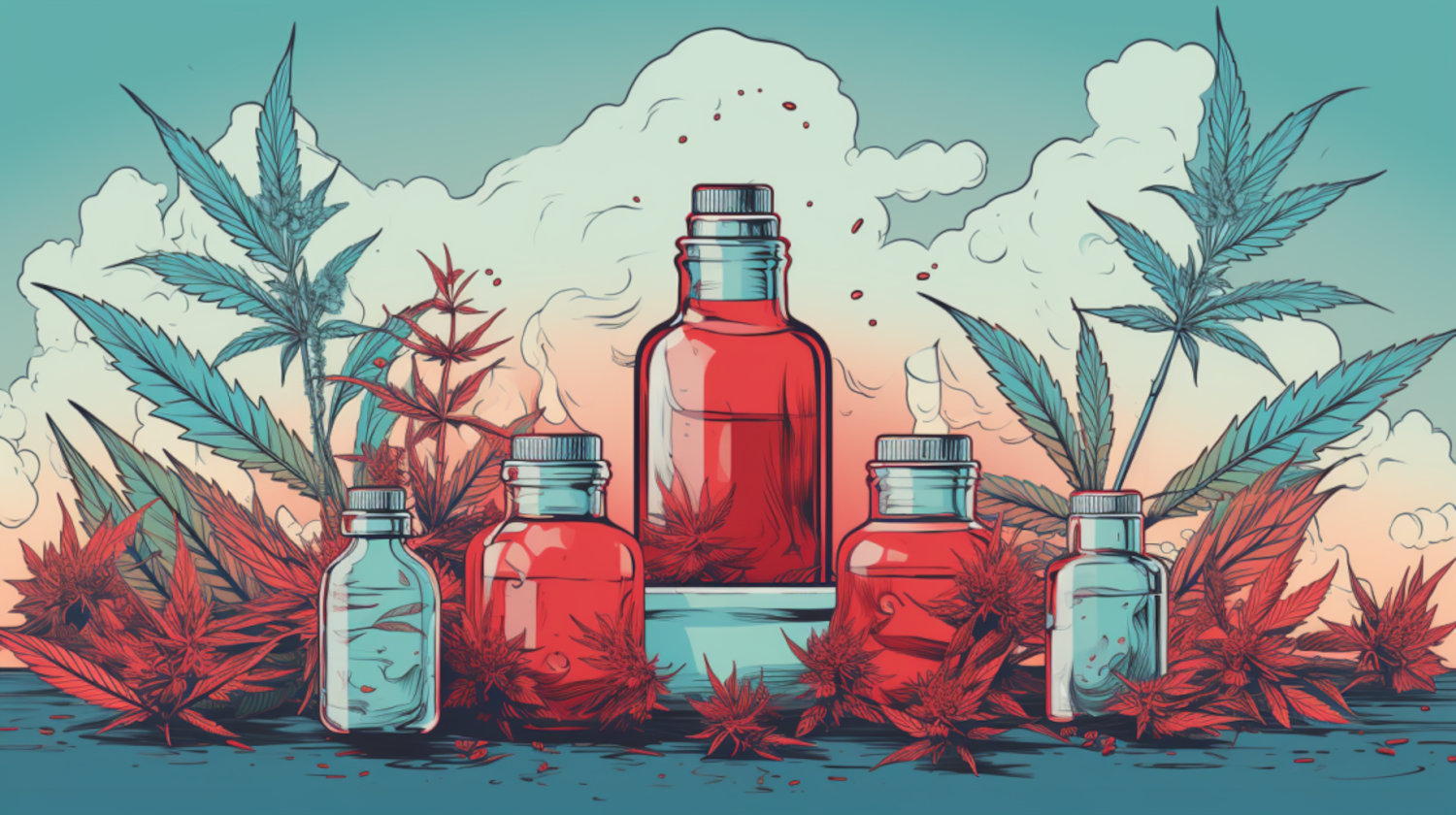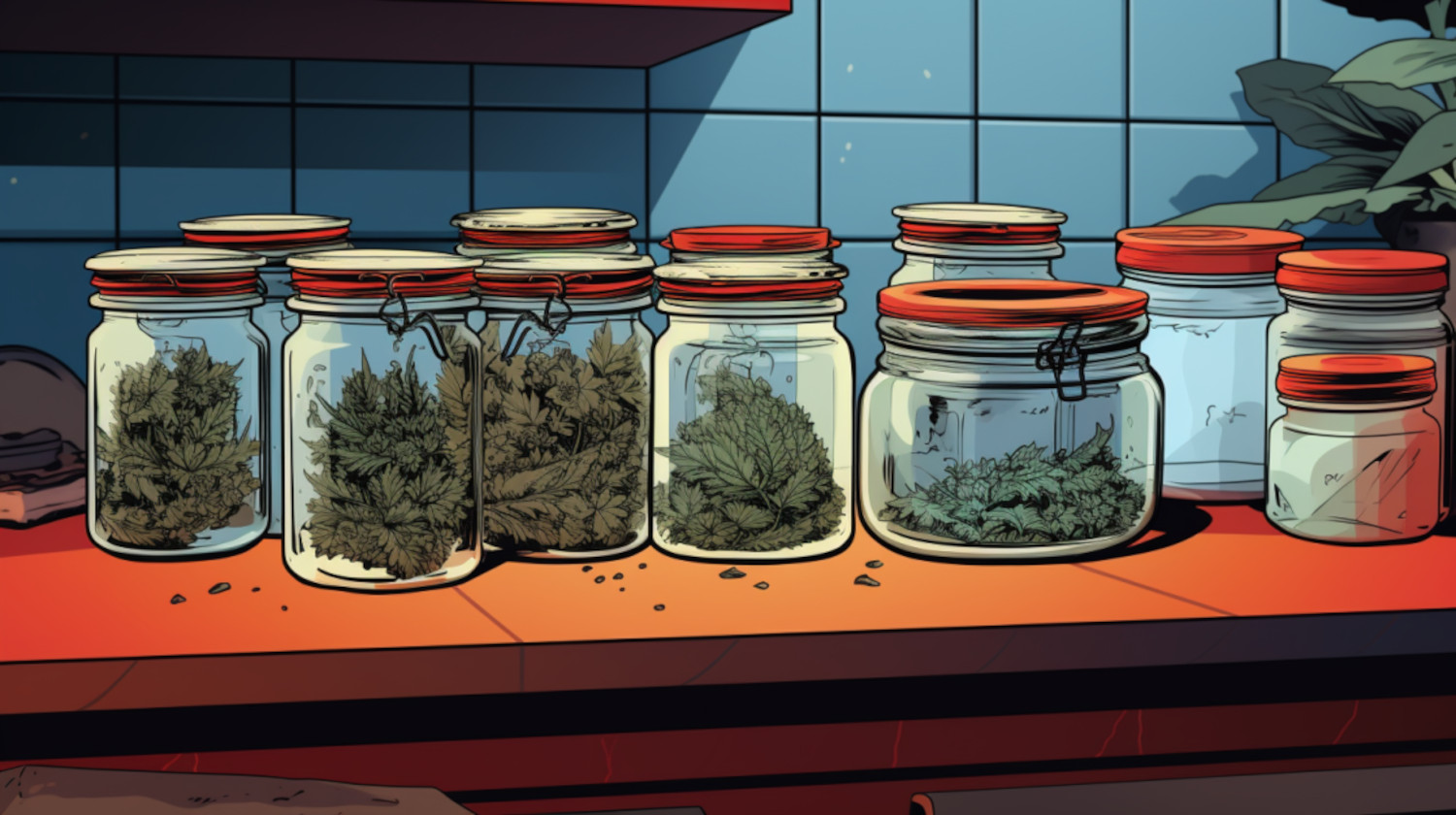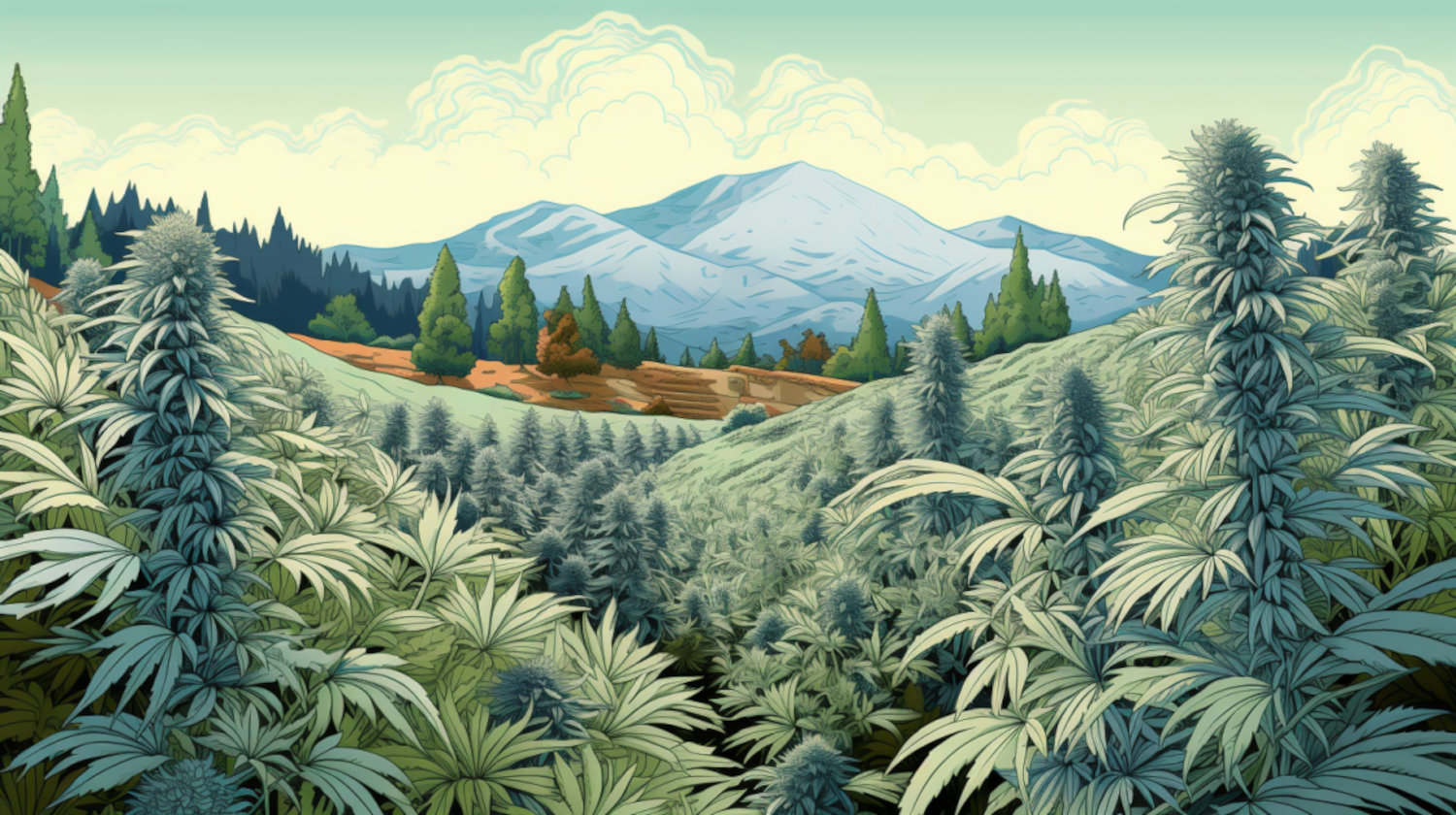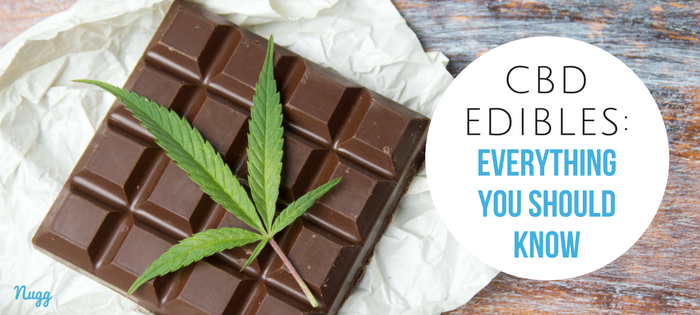CBD oil's popularity has surged in recent years due to its potential to help treat various health conditions, including offering pain relief and stress reduction. Unlike THC, CBD doesn't have any intoxicating effects, which means that it doesn't get you high. This makes it a safer alternative for people looking for natural remedies without the fear of experiencing any impairment.
And because CBD oil can offer a non-intoxicating alternative for pain management, it has become a highly sought-after remedy for conditions like arthritis and chronic pain.1,2 It has also shown promise in reducing anxiety and stress levels, providing a sense of relaxation to those who use it. These potential benefits contribute to CBD oil's widespread appeal.
So, keeping some CBD around sounds like a good idea, but does CBD oil go bad?
How is CBD Oil Made?
CBD oil is derived from the cannabis plant, specifically hemp plants (which can only contain up to 0.3% THC under federal law), and it involves a process that extracts the beneficial cannabinoids while minimizing the presence of unwanted plant components. Here's an overview of how CBD oil is typically made:
- Extraction: The first step in CBD oil production is extraction.3 This process involves removing the cannabinoids – including CBD – from the cannabis plant material. Various solvents can be used for this purpose, ranging from relatively safe options like ethanol to more hazardous solvents like isopropyl alcohol.4 Some advanced methods also employ supercritical fluids like butane or CO2 for extraction.
- Winterization: After extraction, the resulting crude extract may contain impurities such as waxes, triglycerides, and chlorophyll, which can affect the oil's taste and quality. To remove these components, processors employ a method called winterization. The crude extract is placed in a freezer at temperatures ranging from -20 °C to -80 °C for 24–48 hours. During this time, the impurities with a higher melting point solidify and can be removed through filtration.5
- Dissolving in Edible Oil: Once the winterization process is complete, the remaining cannabinoid-rich extract is dissolved in an edible oil, like sunflower, coconut, hemp, or olive oil. This step ensures that the cannabinoids are easily consumable and can be accurately dosed.
The resulting solution is the CBD oil that we all know and love. While CBD oil primarily contains CBD and the carrier oil used for dissolving, it may also have other beneficial compounds from the cannabis plant, such as minor cannabinoids (e.g., CBG, CBC), terpenes (responsible for the plant's aroma and potential therapeutic effects), and flavonoids.6
These compounds, when present, can contribute to what is often referred to as the "entourage effect," where they may enhance the overall therapeutic potential of the CBD oil.
Does CBD Oil Expire?

CBD oil, like many other products, can indeed expire. However, there's a difference between the expiration of CBD itself and the potential degradation of other ingredients in the oil.
CBD oil typically comes with a labeled expiration date, which serves as a guideline for its shelf life. While CBD itself is relatively stable over time, other factors can affect the overall quality and potency of the oil.7 For instance, exposure to light, heat, and oxygen can expedite the degradation of many cannabinoids, including CBD. Research has shown that the CBD content can decrease during storage, especially when samples are exposed to light at higher temperatures.8 This is why proper storage conditions are crucial to extend the shelf life of CBD oil.
Besides CBD, CBD oil also contains carrier oils (e.g., hemp, sunflower, or olive oil) and other cannabis-derived compounds like terpenes and flavonoids. These ingredients can also be susceptible to degradation, affecting the overall quality and flavor of the oil. Heat and exposure to oxygen can cause the carrier oil to become rancid, resulting in an unpleasant taste and potential health concerns.
While the degradation of cannabinoids and other components can affect the overall quality of the oil, it doesn't necessarily mean that the oil has "gone bad" in the sense of being harmful or unsafe to consume. Instead, it may have diminished in terms of potency and flavor.
To maximize the shelf life of CBD oil, you'll always want to store it properly. Keep it in a cool, dark place away from direct sunlight and heat sources. Sealing the bottle tightly to prevent exposure to air can help preserve its quality.
How Long Does CBD Oil Last?
The longevity of CBD oil primarily depends on various factors, including its formulation, storage conditions, and the ingredients used.
- Alcohol-Based Tinctures: CBD oil products that use alcohol as a solvent tend to have a longer shelf life.9 When stored correctly in a cool, dark place, alcohol-based tinctures can last for several years, often up to five years or more.
- Glycerine-Based Tinctures: Conversely, CBD oil products using glycerine as a solvent may have a shorter shelf life, typically six months to two years. Glycerine-based tinctures are not the best choice for herbs containing resins and gums.
- Vegetable Glycerine-Based Tinctures: Tinctures made with vegetable glycerine can last from 3 to 5 years and do not require refrigeration if stored in a cool, dark location.
Several factors can affect how long CBD oil lasts:
- Storage Conditions: Proper storage is key to extending the shelf life of your CBD oil. Keep your CBD oil in a cool, dark place away from direct sunlight, heat sources, and humidity. Exposure to these elements can accelerate degradation.
- Quality of Ingredients: The quality of the ingredients used in CBD oil can impact its shelf life. High-quality carrier oils and pure CBD extracts tend to last longer.
- Packaging: The type of container and its seal can influence shelf life. A tightly sealed, opaque bottle is better at preserving the oil than a loosely sealed or clear container.
The ingredients that tend to degrade first in CBD oil are often the carrier oils, especially in glycerine-based tinctures. The carrier oil may become rancid over time, resulting in an unpleasant taste and smell. Not only that, but exposure to oxygen can cause cannabinoids like CBD to degrade slowly, which can affect their potency.
Signs CBD Oil Has Gone Bad

It's always a good idea to check if your CBD oil has gone bad before using it. This way, you can be sure you're getting the most out of your product while staying safe. Here are some signs to look for to help you recognize when CBD oil may no longer be suitable for consumption:
- Changes in Appearance: Visually inspect the CBD oil. If you notice any significant changes in color or clarity, it could be an indication that the oil has deteriorated. Fresh CBD oil typically has a clear to slightly golden hue; any deviation from this might suggest spoilage.
- Altered Smell: One of the most noticeable signs of rancidity in CBD oil is a change in odor. While CBD oil often has an earthy or herbal aroma, it should not have a pungent or foul smell. If you detect an off-putting odor, it's best to err on the side of caution and avoid using the oil.
- Unpleasant Taste: Taste is another important indicator. Fresh CBD oil usually has a mild, slightly nutty, or grassy flavor. If the oil tastes significantly different or unpleasant, it may have gone bad.
- Separation: In some cases, CBD oil ingredients may separate over time, with the oil and other components visibly separating into layers. While gentle shaking can often recombine them, excessive separation may be a sign of spoilage.
- Mold or Suspicious Particles: Inspect the bottle and the oil for any visible mold growth or unusual particles. If you see any, discarding the product immediately is crucial, as these can pose health risks.
- Expiration Date: Always check the expiration date on the label. If the CBD oil is past its indicated shelf life, it may have lost its effectiveness and could be more likely to spoil.
How to Store CBD Oil
Proper storage of CBD oil is crucial to maintain its quality, potency, and shelf life. Here are some essential tips on how to store CBD oil effectively:
- Container Selection: CBD oil is sensitive to light and air, which can cause degradation. Choose a dark or opaque container to protect the oil from exposure to light. Many CBD oil products come in tinted glass bottles, which are ideal for this purpose. These bottles help block out harmful UV rays that can degrade the oil.
- Cool and Dark Location: Store your CBD oil in a cool, dark place, away from direct sunlight and heat sources. The ideal temperature range for storage is typically between 60°F and 70°F (15°C to 21°C). Avoid storing it in areas where temperature fluctuations are frequent, such as near a stove or window.
- Seal Tightly: Ensure that the container is tightly sealed after each use. This prevents oxygen from entering the bottle, which can lead to the oxidation of cannabinoids like CBD.
- Avoid Humidity: Moisture and humidity can also affect the quality of CBD oil. Keep it in a dry environment to prevent mold or mildew growth.
- Refrigeration: While it's not always necessary, some users refrigerate their CBD oil to prolong its shelf life further. If you live in a particularly hot and humid climate or you don't plan to use the oil for an extended period, refrigeration can be a good option. However, be aware that refrigerated CBD oil may become thicker in consistency, but this is normal and doesn't affect its efficacy.
- Read the Label: Always follow any specific storage instructions provided on the product label. Some CBD oil products may have unique recommendations based on their formulation.
What Happens if You Use Expired CBD Oil?

Using expired CBD oil may not be harmful in the same way consuming spoiled food can be, but it can have certain consequences that affect its effectiveness and safety. Here's what can happen if you use CBD oil past its expiration date:
- Reduced Potency: Over time, the cannabinoids in CBD oil, including CBD itself, may degrade. As a result, the oil may lose some of its potency and effectiveness. This means you might not experience the full benefits of a fresh product.
- Changes in Taste and Smell: Expired CBD oil can develop an unpleasant taste and smell. This can make it less enjoyable to use and potentially harder to tolerate.
- Safety Concerns: While CBD oil itself is unlikely to become toxic or harmful after its expiration date, other ingredients in the oil, such as the carrier oil (e.g., hemp, sunflower, or olive oil), may become rancid. Rancid oils can hurt flavor and smell, and in some cases, they may contain harmful compounds. However, this is more of a concern with extremely old or poorly stored products.
If you discover that your CBD oil has expired, it's generally best to exercise caution:
- Assess the Oil: Start by inspecting the oil. Check for changes in color, clarity, smell, and taste. If the oil appears significantly altered or has an off-putting smell or taste, it's best not to use it.
- Consider Disposal: If your CBD oil has passed its expiration date and shows signs of degradation, it's wise to dispose of it properly. You can check with your local waste disposal authorities for CBD oil disposal guidelines or consult the product manufacturer for specific recommendations.
- Purchase Fresh CBD Oil: To ensure you receive the full benefits of CBD, consider purchasing a fresh bottle of CBD oil from a reputable source. This will guarantee a product with optimal potency and quality.
So, while using expired CBD oil may not pose severe health risks, it's generally best to avoid it. Expired CBD oil may be less effective, have an unpleasant taste and smell, and potentially contain rancid carrier oils. To maximize the benefits of CBD and ensure safety, store your CBD oil properly and replace it with a new product if it has exceeded its expiration date.
References
- Lowin T, Tingting R, Zurmahr J, Classen T, Schneider M, Pongratz G. Cannabidiol (CBD): a killer for inflammatory rheumatoid arthritis synovial fibroblasts. Cell Death Dis. 2020;11(8):714. Published 2020 Sep 1. doi:10.1038/s41419-020-02892-1 ↩︎
- Villanueva MRB, Joshaghani N, Villa N, et al. Efficacy, Safety, and Regulation of Cannabidiol on Chronic Pain: A Systematic Review. Cureus. 2022;14(7):e26913. Published 2022 Jul 16. doi:10.7759/cureus.26913 ↩︎
- Szalata M, Dreger M, Zielińska A, Banach J, Szalata M, Wielgus K. Simple Extraction of Cannabinoids from Female Inflorescences of Hemp (Cannabis sativa L.). Molecules. 2022; 27(18):5868. https://doi.org/10.3390/molecules27185868 ↩︎
- Lazarjani MP, Young O, Kebede L, Seyfoddin A. Processing and extraction methods of medicinal cannabis: a narrative review. J Cannabis Res. 2021;3(1):32. Published 2021 Jul 19. doi:10.1186/s42238-021-00087-9 ↩︎
- Hazekamp A. The Trouble with CBD Oil. Medical Cannabis and Cannabinoids. 2018;1(1):65-72. doi:https://doi.org/10.1159/000489287 ↩︎
- Izzo AA, Capasso R, Aviello G, et al. Inhibitory effect of cannabichromene, a major non-psychotropic cannabinoid extracted from Cannabis sativa, on inflammation-induced hypermotility in mice. Br J Pharmacol. 2012;166(4):1444-1460. doi:10.1111/j.1476-5381.2012.01879.x ↩︎
- Franco C, Protti S, Porta A, et al. Stability of cannabidiol (CBD) in solvents and formulations: A GC–MS approach. Results in Chemistry. 2022;4:100465. doi:https://doi.org/10.1016/j.rechem.2022.100465 ↩︎
- Trofin IG, Dabija G, Filipescu L. Long-term Storage and Cannabis Oil Stability. Revista de Chimie. 2012;53(3). ↩︎
- Kumadoh D, Ofori-Kwakye K. Dosage forms of herbal medicinal products and their stability considerations - an overview. Journal of Clinical Reviews. 2017;4. doi:https://doi.org/10.22159/jcr.2017v4i4.16077 ↩︎
The information in this article and any included images or charts are for educational purposes only. This information is neither a substitute for, nor does it replace, professional legal advice or medical advice, diagnosis, or treatment. If you have any concerns or questions about laws, regulations, or your health, you should always consult with an attorney, physician or other licensed professional.




